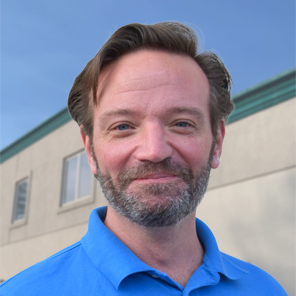The sport of soccer, internationally known as football, is the most popular sport around the globe. There is no sport quite like soccer that spans the gaps of country, culture, and economic status to bring people together to play.
This weekend kicks off the FIFA World Cup, the premiere tournament for soccer athletes around the world. While the quadrennial event has faced significant, but justifiable, controversy for the 2022 contest, there is no doubt that the World Cup is where fans can watch the most elite players compete at the highest level.
At EXCEL we have our own team of clinicians that have played soccer at the high school, collegiate, and even semi-professional levels. Over the next 28 days of the tournament, we will be sharing some of their soccer injury stories, and the role the sport played in them becoming a physical therapist.
Wall physical therapist, John Siciliano, PT, shares his soccer story and how it shaped him into the person he is today.
My injury occurred when I was 16 years old. I was playing center midfielder in my junior year at Saint Rose High School. My school was 7-1 at the time and ranked 9th in the shore. During the game, I was on a breakaway and played the ball too far ahead of me. The opposing team’s goalkeeper came out to grab the ball, and in frustration I tried sliding to beat him. I hit the middle of my shin against his knee and fractured by tibia and fibula.
I had a mid-tibia fracture and lower fibular fracture. It was a closed fracture, meaning it didn’t break the skin, although it was displaced, meaning the bones moved so much that a gap formed around the fracture. My fracture required an open reduction, internal fixation (ORIF) surgery. For an ORIF, a surgeon needs to realign the bone through an incision (open reduction) and fix the bone fragments together with pins, plates, rods and/or screws (internal fixation).
A displaced tib/fib fracture requiring subsequent surgery is not very common in soccer, but it does happen (see Maxime Crépeau). There are several other prominent professional athletes in other sports that have sustained this type of injury including Joe Theisman (NFL), Tim Krumire (NFL), Alex Smith (NFL), Paul George (NBA), and Gordon Hayward (NBA).
Following my surgery, I met a wonderful physical therapist and worked with her for 4 months post-op. I eventually returned to soccer about 6 months later. It isn’t uncommon to have consequential injury following an initial injury, and I did have some hamstring issues for about a year after that.
Looking back and knowing what I know now, the hardest part about coming back to sport was the lack of proprioception. At the time in 1991, isokinetic work was the phenom, where exercise was performed on special equipment providing resistance at a constant speed, rather than using weight or doing closed chain exercises. When I went back to playing, I was falling, pulling hamstrings, and twisting ankles all over the place. I just did not know where my leg was in space, never mind when it hit the ground.
Eventually, I went on to play soccer on scholarship at Monmouth University. Later I played semi-professional soccer and wrapped up my career playing in some men’s leagues.
My injury molded my life. Growing up, soccer was who I was. I had very high aspirations because for some time, I was semi elite. I played alongside now-US National Team coach, Gregg Berhalter, Claudio Reyna, and Giovanni Savarese, to name a few. But this injury was the reason I chose to become a physical therapist. My experience and interest were the foundation I needed to become a successful PT. Nothing else made sense to make a living other than to feel like I contributed to the common good. I like to think I took some old lemons and made some really good lemonade. 😊
As a high school varsity soccer player, John was first introduced to Physical Therapy after suffering a compound tibular/fibular fracture during a game. Long interested in the human body and kinesiology, this experience led John to realize that he wanted to devote his career to helping patients recover from injuries and disabilities. He completed a B.S. in Biology at Monmouth University, where he was a scholarship athlete and served two years as team captain. Learn more about John.

